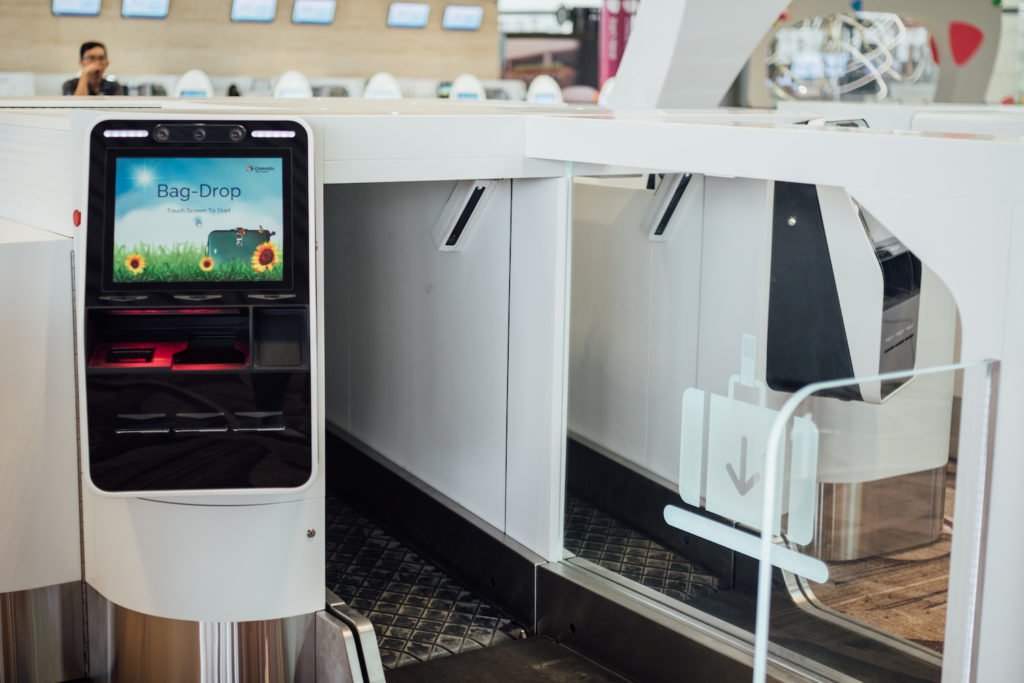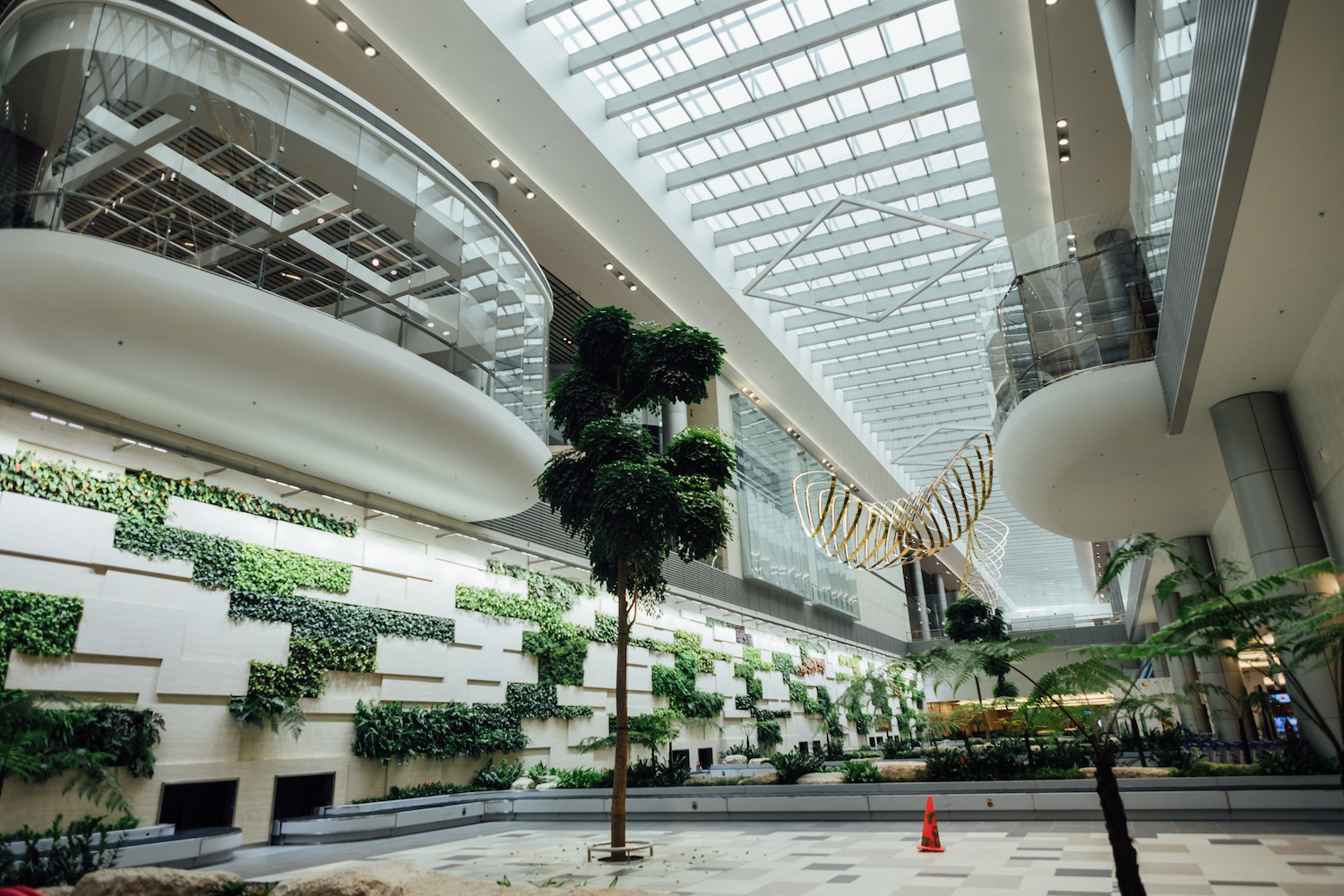Changi Airport’s newest terminal officially opened last week to rave reviews, with passengers noting the smooth, efficient process while transiting and how cutting edge its automated systems are.
But not all were impressed. Emmanuel Daniel — the founder of financial consultancy company The Asian Banker — had some harsh words for T4, stating how its designers “betrayed Singapore and Singaporeans.”
In an extensive blog post, Daniel backs up his statements with in-depth explanations of how millions of dollars have apparently been wasted into a lackluster customer experience at the terminal, which he describes as a “very transactional idea of what an airport should be”.
Regardless if you’ve been awed or thumbed your nose at T4, Daniel’s full blog post is a must-read for all those interested in design, engineering, and architecture. Check out some choice highlights from his post below.
On the absence of a common concourse
“I am sure that the security people would argue against a common concourse, but the argument can go either way and nobody is the wiser. 40 years of running a common concourse across three terminals without incident suddenly not a valid idea? The designers of Terminal 4 did not think of it as a signature feature. A common concourse takes the stress out for transiting passengers, while creating a marketplace communal atmosphere, increasing retail exposure, and freeing up real estate for other uses and it is here that leadership and a sense of ownership would have made a huge difference.
In all likelihood, it was the software engineers who took over in Terminal 4, separating the arrivals and departures so that they could implement their security and tracking toys, even if it makes the airport more impersonal and diluting it to look and feel like all other airports around the world. For the loss of this one feature, I wished there was a strong leader at Singapore Changi Airport who had a mental picture of what he had inherited that is uniquely Singaporean instead of succumbing to the process engineers. The combined concourse was the one feature that every time I landed, I knew I was in Singapore and not anywhere else.”
On its small elevators
“Even simple things like the size of elevators is bizarre. In Terminal 3 the elevators can take up to four or five baggage trollies each, and there are several in each elevator shaft, while the ones in Terminal 4 can hardly fit in two trollies.
What’s going on here? Did we appoint a farmer from a third world country to design the elevators? Not even China could be accused of this kind of design flaw today. Even if Terminal 4 is being designed for “transactors”, meaning people who use the airport only for travel, the size of the elevators is frankly embarrassing.”

On the apparent mistake of letting engineers design the airport
“If anything, these nerds rushed all the way just to arrive at what Incheon Airport in Seoul is today. All the unique features of Singapore Changi Airport, achieved over 40 years, thrown out of the window just to look like Incheon.
They made the designers design huge signs at the immigration entrance in Terminal 4 saying that you can use these channels if your machine readable passports are preregistered by finger print. Well, what’s so special about that? That experiment was already a success in Terminal 3 and Hong Kong, Taipei and Dubai airports do this without fanfare.
Millions of dollars wasted in redesign to communicate a message that is already a given in many airports around the world today. Money that could have been used to create a different check-in experience, such as clustering the checking counter in circles so that they feel more cosy and less intimidating. This is what happens when you allow engineers power over the customer. The software engineers thought that this was about them, when the genius of technology is precisely that it is invisible.
Instead, the automated check in and immigration machines are spread too far apart so that if a user is in trouble, he will feel intimidated. The excuse that the engineers give that Terminal 4 is a “showcase for new technology” is a complete nonsense for doing what needs to be done while any technology is still current. Technology changes all the time. Before you implement new technology across terminals, the next one comes on the heels within 18 months.”
On how “cantankerous” Singaporeans need to voice out
“The people of Singapore are a cantankerous, complaining, indulgent and never satisfied lot. From this demanding lot came the genius of other national assets like Singapore Airlines that has carried its DNA and stood the test of time. No the people did not create it, but they certainly shaped it because the people who created it told themselves that this cantankerous lot matter.
What needs to be done now is for someone to come out to explain what is happening here and take ownership and even the people’s feedback. Out of this process, some of the community elements that can be built into the superstructure are even very simple – like a tree-lined jogging and bicycle tracks parks connecting the terminals and humanising them, putting people back into the picture.
There is so much energy and genius in the people of Singapore that is not reflected in Terminal 4.”





Michael Petraeus says
In design world there is a saying – you don’t judge the design if you haven’t seen the brief. And this post is a perfect example of that. The guy clearly doesn’t know what the tasks set for it were and yet you boldly judge the execution.
Why not think WHY certain things were done this way?
I’m not going to evaluate the interior since I haven’t traveled through it. But I will judge the comments, proving he’s oblivious to the context in which the Terminal 4 was designed.
First of all – T4 was built in this specific location because it was the space left by the demolished Budget Terminal. It was never meant to be connected seamlessly to the rest of the airport for several good reasons:
1. It does not serve transit passengers – at least not primarily. If you look at the airlines assigned to it you will see that they are either budget or East Asian airlines – in other words they do not use Singapore as a hub, because they serve APAC locations from their home bases on their own.
2. In other words – it serves Singapore-bound passengers + regional travelers from Singapore, to destinations in East Asia. For that reason it could also have separate Departure and Arrival sections – because it’s a terminal people go through not a terminal where people spend their time.
When you operate a big, hub airport, people spend a lot of the time there and use facilities quite extensively. So it’s OK to blend both groups of passengers. But when you have arrivals and departures only, with little to no transit, then you can offer a more seamless and faster experience by dividing them.
3. There’s a very good reason software engineers played a big role in creating T4 – the terminal itself is a test bed for solutions implemented in T5 – which is the real expansion of Changi, and will ultimately nearly double its capacity.
It therefore does EXACTLY what it was supposed to do – provide an outlet for direct travelers, reducing the load on other terminals, keeping them integrated to offer the best experience for transit passengers, who spend a lot more time on Changi.
On a side note – using American or European examples as comparisons is a bit of a joke, because there is probably no airport in the entire Western world that comes close to Changi – in any category, from organization of security services, through travel experience design, to basic facilities.
Changi is, in fact, one of the best (if not the best) designed airports in the world – not only as a building, but as a transportation hub. Envisioned from the start in a horseshoe shape, allowing it to minimize its size, without creating too many piers protruding into the airside, while offering a centralized access to all existing and planned terminals (1, 2, 3). T5 will be a challenge, because it has outgrown the original design, so seamless integration will not be easy. But as it is now, it is near perfect.
T4 is, however, being used exactly as it was planned to. So I would encourage ll the complainers to first ask themselves why certain things are done the way they have been, rather than lashing out publicly about a project that took years of work and planning of hundreds of people.
Vel Wong says
Totally agreed.
There is also no sky train to the other terminals. Only buses.
Imagine carrying all your lungages there and loading and unloading.
The taxis stand also only operates till 9:00pm.
The spacing along the restaurants is horrible too. So narrow. Totally not traveler friendly.